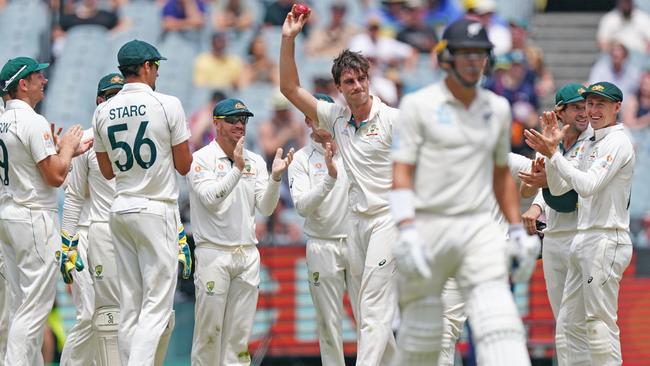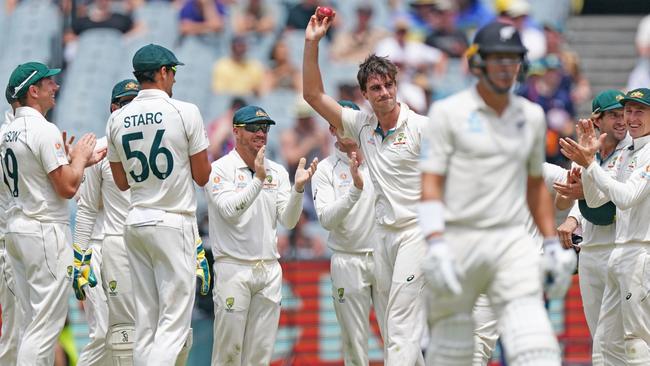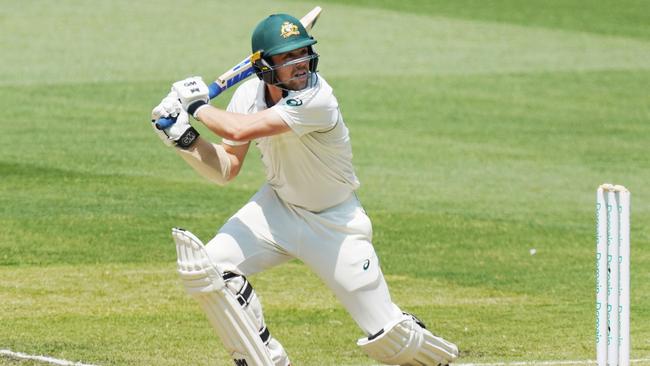Ian Chappell: New Zealand’s batting deficiencies exposed in Australian conditions
New Zealand are the No.2 Test nation, but their struggles in Australian conditions show something is horribly out of whack with the rankings, writes Ian Chappell.

Cricket
Don't miss out on the headlines from Cricket. Followed categories will be added to My News.
- Aussie bowlers out gun Kiwis to close in on series win
- Time for third umpire to get a software update?
Computers might occasionally simplify life but don’t trust them when they start ranking Test cricket teams.
New Zealand are No.2, according to the computer Test rankings, but that ignores their capabilities under Australian conditions.
When a bowling attack labours for around 150 overs to terminate the opposition’s first innings and then the batting line-up doesn’t threaten 200 at its first attempt, there is never going to be a happy ending.
Watch over 50 sports LIVE on Kayo! Stream to your TV, mobile, tablet or computer. Just $25/month, cancel anytime. New to Kayo? Get your 14-day free trial & start streaming instantly >

The effort of the New Zealand bowlers is commendable. They can contain the opposition for long periods but the wicket-taking potency required to beat good sides is severely lacking when the admirable Neil Wagner takes a well-deserved rest.
Compare that with Australia’s world-class attack — which wasn’t even hindered by the inclusion of the combative James Pattinson for the injured Josh Hazlewood — and you have a sturdy stock car appearing as a speck in the rearview mirror of a firing Formula One racer.
The Australian attack ripped through New Zealand’s paper-thin batting line-up.
The deficiencies of their techniques under Australian conditions were quickly exposed and it was only the gritty Tom Latham who survived the opening blast from Pattinson and Pat Cummins.
There was no doubt about the quality of the bowling; it was potent, accurate and asked a lot of questions. They were questions that left the New Zealand batsmen, with their predominantly front-foot techniques — and angled rather than straight bats — without answers.
One of the first things a captain looks for in an opposing line-up is batsmen who are likely to keep you awake at night; guys who make big scores quickly.

A glance at the New Zealand line-up should have captain Tim Paine thinking he’s in for a few nights of peaceful slumber.
So relaxed was Paine that even with a mammoth lead of 319 he refused to enforce the follow-on. In addition to enjoying a restful night’s sleep, Paine must also believe in capital punishment.
With their batsmen misfiring, New Zealand were seen in their best light when their bowlers hassled, harried and even held Steve Smith’s scoring rate in check.
However, it took them an eternity to deliver the terminal blow — his dismissal.
Smith is a devoted disciple of the first principle of former Australian batsman Bob Cowper.
Cowper was the first Test player to score a triple century in Australia — 307 at the MCG in 1965-66 — and always insisted: “It’s not what you look like that matters, it’s the number that goes next to your name on the scoreboard.”

While Smith was tested and eventually failed against the short-pitched barrage, he lingered long enough to make life easier for a determined Travis Head.
Head also has his limitations against the short ball but knows what to do with any wayward delivery around off stump.
He’s extremely strong square of the wicket on the off-side and his aggressive approach throws the onus back on to the bowling side to find a way through his defence.
If Australia ever decide to go with a five-man bowling attack, Head shouldn’t be the one to go.
The often-maligned batting of Paine was a revelation. He played aggressively and shrewdly to lead Australia to a position of strength that his bowlers quickly enhanced with a commanding performance.

Paine, who is often pigeon-holed as a compulsive hooker, played the many short-pitched deliveries with aplomb, hooking and pulling when appropriate and avoiding when necessary.
I’m confounded by those who keep agitating for him to be replaced because Paine has the look of a captain who will leave the stage at a time of his choosing.
The more-maligned MCG pitch behaved extremely well and was a far cry from the lifeless patch of clay that hosted the last Ashes contest in Melbourne.
The curator, Matt Page, deserves a commendation for bravery in the face of adversity in producing a surface that has encouraged all participants.
The pitch was seen for what it was when Australia bowled; a surface that provided the bowlers with some encouragement while not making batting impossible.
There used to be a common saying in cricket: “They’re a good team on paper.”
The updated version is: “They’re a good team, according to the computer.”
Unfortunately for New Zealand, what my old coach told me many years ago is still applicable in the digital age: “The problem is you play on turf, not paper.”
